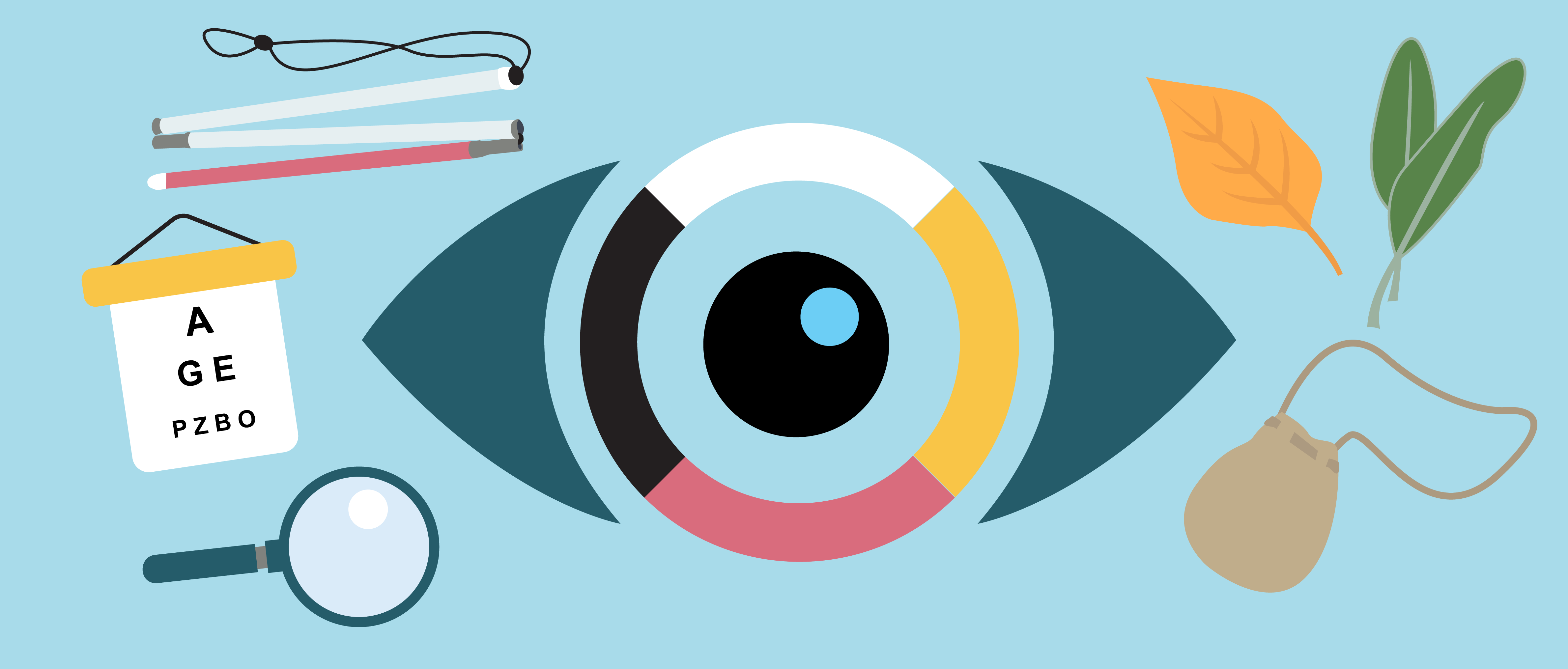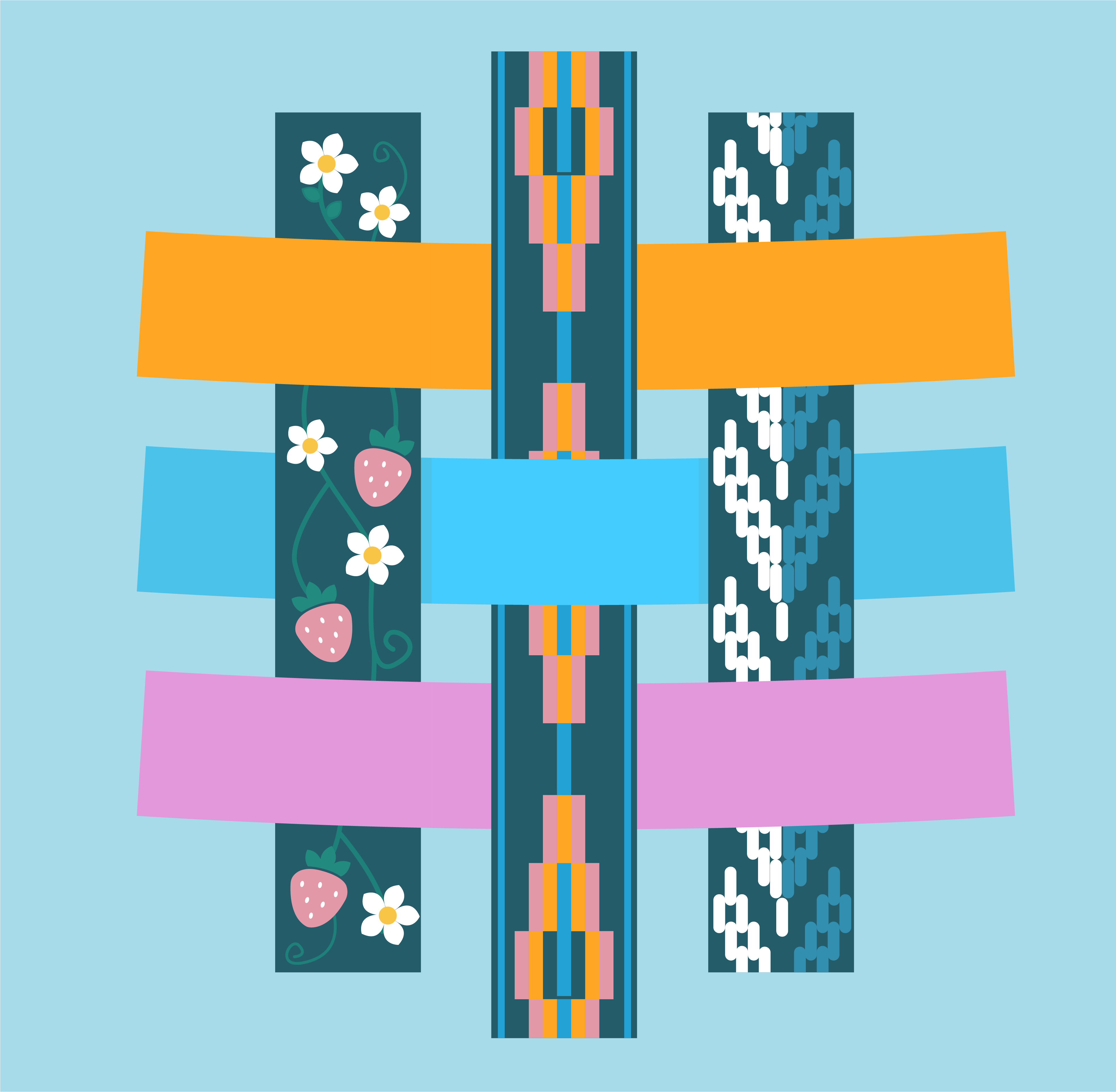Réconciliation et autochtonisation à RDVC
La réconciliation et l'autochtonisation ne sont pas de simples mots; elles représentent des actions concrètes qui reflètent notre engagement visant à soutenir les communautés autochtones. Si vous êtes autochtone et vivez avec une limitation visuelle, nous voulons vous mettre en relation avec les ressources et l'aide dont vous avez besoin.
À Réadaptation en déficience visuelle Canada, nous transformons activement notre organisation de soins de santé afin de mieux servir les communautés autochtones. Notre objectif est de travailler aux côtés des communautés autochtones afin de créer un système de soins de santé sécuritaire, accessible sur le plan culturel et adapté à vos besoins uniques.
Nous vous invitons à explorer cette page pour en savoir plus sur nos efforts continus en matière d'autochtonisation et de réconciliation. Vous trouverez ici des détails sur nos actions en faveur de la vérité et de la réconciliation, ainsi que des informations sur la réadaptation visuelle et des ressources destinées spécifiquement aux Autochtones à la recherche de services de soins de santé.
Reconnaissance des territoires

À RDVC, nous comprenons et reconnaissons que nous sommes extrêmement privilégiés de servir nos clients sur des territoires qui ont été habités depuis des millénaires par les Premières Nations, les Métis et les Inuits. Le terrain sur lequel se trouve notre siège social à Toronto est couvert par le Traité n° 13, un accord signé en 1805 par les peuples Mississauga et les représentants de la Couronne. Nos bureaux et nos employés sont répartis dans des communautés partout au Canada. Nous reconnaissons qu'ils sont situés dans des régions qui comprennent les terres traditionnelles des Cayuse, des Umatilla et des Walla Walla, dans l'actuelle ville de Victoria, en Colombie-Britannique, et s'étendent jusqu'aux terres des Beothuk et des Mi'kma'ki à St. John's, à Terre-Neuve-et-Labrador.
Nous reconnaissons et honorons la présence durable de tous les peuples des Premières Nations, Métis et Inuits sur ces terres. Nous reconnaissons les innombrables injustices qui leur ont été infligées : la confiscation de leurs terres, le colonialisme, les enfants envoyés dans des pensionnats, le racisme institutionnel et bien d'autres atrocités encore. Nous attestons et comprenons le traumatisme intergénérationnel qu'ils ont subi.
Nous sommes reconnaissants de collaborer avec des organisations de la santé autochtone afin d'améliorer la santé visuelle. En reconnaissant le passé et en prenant des mesures décisives aujourd'hui, nous pouvons collectivement œuvrer à l'édification d'un avenir plus équitable et plus prometteur.
Notre reconnaissance des territoires constitue un point de départ sincère et authentique pour nous solidariser avec les peuples autochtones et entreprendre des actions significatives en faveur de la réconciliation. RDVC restera fidèle à son engagement en faveur de la réconciliation par le biais de collaborations respectueuses et d'une écoute active, qui sont, selon nous, essentielles pour comprendre et répondre aux besoins de nos clients autochtones. En honorant et en valorisant les connaissances et les contributions de nos partenaires actuels et futurs dans le domaine de la santé autochtone, nous travaillerons ensemble pour obtenir les meilleurs résultats possibles en matière de santé.
|
Cette illustration met en vedette les communautés autochtones du Canada, dont la tortue symbolise l'île de la Tortue. À l'intérieur de la carapace de la tortue, des éléments naturels – la neige, l'herbe verte, l'eau, les montagnes et le ciel – reflètent la diversité des paysages du pays. La communauté inuite est représentée par des lunettes de neige gravées, les Métis par la ceinture rouge métisse et les communautés des Premières Nations par la plume d'Aigle. Illustration créée par Design de Plume conçue pour être utilisée exclusivement par Réadaptation en déficience visuelle Canada. |
Progresser vers la vérité et la réconciliation

En tant qu'organisme national de soins de santé composé de colons installés sur ces terres, nous accordons la plus grande importance aux connaissances traditionnelles, aux contributions et aux cultures des Premières Nations, des Métis et des Inuits que nous servons. Nous nous engageons à créer des espaces inclusifs et accueillants pour tous.
En juin 2015, la Commission de vérité et réconciliation du Canada a publié 94 appels à l'action. L'appel à l'action n° 22 stipule :
« Nous demandons aux intervenants qui sont à même d’apporter des changements au sein du système de soins de santé canadien de reconnaître la valeur des pratiques de guérison autochtones et de les utiliser dans le traitement de patients autochtones, en collaboration avec les Aînés et les guérisseurs autochtones, lorsque ces patients en font la demande. »
Cliquez ici pour consulter la liste complète des Appels à l’action de la Commission de vérité et réconciliation du Canada, en particulier les appels 18 à 24, concernant la santé et les soins de santé.
|
Cette image abstraite représente un œil formé d'une roue médicinale, symbolisant l'importance de l'équilibre dans la guérison. Sur le côté gauche de l'œil, on retrouve des outils modernes d'évaluation visuelle et d'adaptation, tandis que le côté droit met l'accent sur des éléments traditionnels de guérison autochtone, notamment une feuille de tabac, une feuille de sauge et un sac de médicaments. Cette composition reflète l'engagement de RDV envers la vérité et la réconciliation en rendant hommage à la fois aux traitements contemporains et aux connaissances traditionnelles des Autochtones. Illustration créée par Design de Plume conçue pour être utilisée exclusivement par Réadaptation en déficience visuelle Canada. |
Appels à l'action - Comment RDVC y répond

RDVC assume sa responsabilité de favoriser le changement au sein du système de santé. Nous prendrons des mesures pour donner suite aux appels à l'action de la Commission de vérité et réconciliation du Canada en faveur de l'égalité des droits en matière de santé, de l'élimination des disparités en matière de santé, de la décolonisation et de la lutte contre le racisme dans le secteur de la santé, ainsi que de l'autodétermination dans l'utilisation et l'accès aux connaissances traditionnelles et aux pratiques de guérison.
|
Cette image représente des motifs tressés, chaque brin vertical représentant un élément culturel distinct. Le premier brin à gauche présente un motif de fraises des Premières Nations, symbolisant la santé et la connexion. Ensuite, un motif géométrique rappelant ceux que l'on trouve sur les parkas reflète la nature personnelle et significative des traditions inuites, rappelant que la guérison est un parcours individuel. Le dernier brin intègre un motif de tissage métis, avec des motifs subtils en forme de flèches symbolisant le progrès et le tissage lui-même représentant la force de la communauté. Les bandes horizontales arborent les couleurs de la palette de l'organisme RDV, symbolisant son engagement à intégrer les connaissances traditionnelles autochtones dans son travail. Chacune des trois couleurs correspond à l'une des initiatives principales de RDV : prestation de services, engagement et apprentissage. Illustration créée par Design de Plume conçue pour être utilisée exclusivement par Réadaptation en déficience visuelle Canada. |
Nos mesures comprendront les suivantes :
Prestation de services collaboratifs :
RDVC offrira des services de réadaptation et de santé qui répondent aux besoins des Autochtones, qui sont adaptés à leur réalité et qui sont fournis de manière à respecter leur culture et leurs contributions. Notre pratique nous permettra de travailler directement avec les centres de santé autochtones et les autorités régionales en matière de santé, les conseils communautaires et les Aînés afin de fournir des services avec patience et souplesse et, dans la mesure du possible, en collaboration avec les autres services offerts au sein de la communauté par des fournisseurs de soins autochtones.
![]() La fraise, ou baie du cœur, est un symbole souvent associé à l'interdépendance et à la santé, car toutes les parties de la plante sont comestibles et possèdent des propriétés médicinales. Les racines de la plante sont reliées à la terre, tout comme les veines et les artères du cœur sont reliées au corps humain.
La fraise, ou baie du cœur, est un symbole souvent associé à l'interdépendance et à la santé, car toutes les parties de la plante sont comestibles et possèdent des propriétés médicinales. Les racines de la plante sont reliées à la terre, tout comme les veines et les artères du cœur sont reliées au corps humain.
Les deux mains tenant la baie représentent le partage des connaissances et la collaboration entre RDVC et les autorités de santé des Autochtones et les bureaux régionaux.
Iconographie créée par Design de Plume conçue pour être utilisée exclusivement par Réadaptation en déficience visuelle Canada.
Un engagement continu :
RDVC collaborera avec des organisations régionales et des communautés des Premières Nations, des Métis et des Inuits partout au Canada. Nous avons pour objectif d'établir des relations avec des organisations partenaires afin de soutenir la prestation de services offertes aux peuples et aux communautés autochtones dans toutes les provinces et régions où RDVC est en activité. Nous partagerons les meilleures pratiques et les enseignements tirés de l'expérience de nos dirigeants et ferons connaître publiquement nos progrès. À mesure que nous cultiverons nos relations, toutes nos interactions seront fondées sur l'instauration de la confiance, le respect des différences et la reconnaissance de la culture autochtone, des connaissances et du savoir-faire des Autochtones. Notre engagement sera éclairé par une sensibilisation à la sécurité culturelle et une compréhension de l'impact des traumatismes historiques. Nous aborderons ce travail sachant que cela prendra du temps et demandera un engagement à long terme. RDVC sera responsable de ses engagements et envers ses partenaires.
![]() Les trois personnages, ainsi que les trois symboles, représentent les groupes des Premières Nations, des Métis et des Inuits. La bulle au-dessus illustre la collaboration et les conversations visant à établir la confiance, le respect et les manières d'être entre les groupes autochtones et RDVC.
Les trois personnages, ainsi que les trois symboles, représentent les groupes des Premières Nations, des Métis et des Inuits. La bulle au-dessus illustre la collaboration et les conversations visant à établir la confiance, le respect et les manières d'être entre les groupes autochtones et RDVC.
La plume représente les groupes des Premières Nations et symbolise le respect, l'honneur et la sagesse. Le symbole de l'infini représente le rapprochement de deux cultures distinctes (européenne et autochtone) pour créer la culture métisse unique. Le couteau Ulu dont la lame est en forme de croissant, souvent transmis de génération en génération, représente l'histoire, les traditions et la résilience des Inuits.
Iconographie créée par Design de Plume conçue pour être utilisée exclusivement par Réadaptation en déficience visuelle Canada.
L’apprentissage organisationnel :
Tous les employés de RDVC recevront une formation sur la compétence culturelle et la sécurité. Nous offrirons un programme national de formation de manière à ce qu'elle soit uniforme pour tout le personnel. De plus, nous chercherons des occasions de formation locale et régionale afin de mieux comprendre la diversité de l'histoire et de la culture des Premières nations, des Métis et des Inuits. RDVC collaborera également avec des organismes partenaires comme INCA et les SCS afin de partager des ressources et de former des cercles consultatifs pour éclairer notre apprentissage.
![]() La tortue représente la vérité selon les Sept enseignements des Aînés. Elle souligne l'importance de vivre en accord avec la vérité et d'être conscient de l'interdépendance de toutes choses. Vivre dans la vérité peut signifier ne parler que de ses propres expériences et des connaissances acquises.
La tortue représente la vérité selon les Sept enseignements des Aînés. Elle souligne l'importance de vivre en accord avec la vérité et d'être conscient de l'interdépendance de toutes choses. Vivre dans la vérité peut signifier ne parler que de ses propres expériences et des connaissances acquises.
L'Amérique du Nord et l'Amérique centrale sont également appelées « Île de la Tortue » par de nombreux groupes autochtones. Cette histoire originelle rappelle la responsabilité qu'ont les êtres humains de se protéger et de s'honorer mutuellement, ainsi que les territoires.
Iconographie créée par Design de Plume conçue pour être utilisée exclusivement par Réadaptation en déficience visuelle Canada.
Grâce à ces initiatives, nous souhaitons favoriser un environnement de soins de santé plus inclusif et équitable, répondre aux appels à l'action et faire progresser la vérité et la réconciliation.
